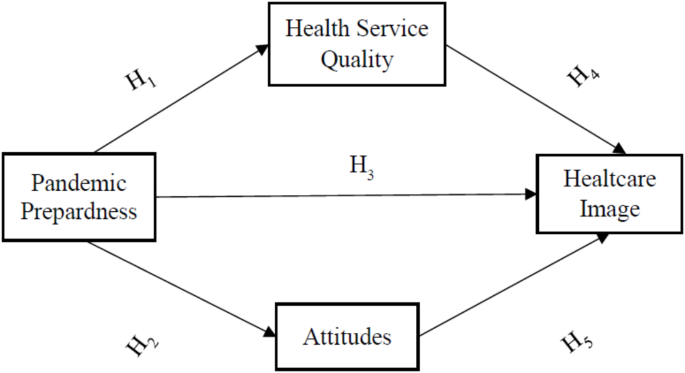Silicon Valley's Shifting Politics-and The One Thing Uniting Them
Silicon Valley's political divides finds unity in AI concerns.
gettyWhen I started covering Silicon Valley as an industry analyst in 1981, most top tech execs were politically conservative. They were entrepreneurs who believed in a free market and wanted the least government intervention as they began inventing our digital future.
However, there was a significant tech milestone in the mid-1990s when tech executives’ political positions began shifting slightly towards the middle, and they needed government support to further their information age agenda. It came when Netscape introduced the first internet browser, and even die-hard conservatives began interacting with Democratic President Bill Clinton and Vice President Al Gore.
Venture capitalists and tech executives realized that the internet was set to become a revolutionary technology that would need more bandwidth, new telecom regulations, and government backing to help grow it for use in broader government, business, education, and eventually consumer markets.
Tech execs also knew that they might have a significant ally in the then current administration as Vice President Gore, as a senator, was instrumental in the development of major legislation that made the internet possible. According to Wikipedia, "On June 24, 1986, Gore introduced S-2594, Supercomputer Network Study Act of 1986.
As a senator, Gore began to craft the High Performance Computing and Communication Act of 1991 (commonly referred to as “The Gore Bill ”) after hearing the 1988 report Toward a National Research Network submitted to Congress by a group chaired by the University of California, Los Angeles professor of computer science, Leonard Kleinrock, one of the central creators of the ARPANET (the ARPANET, first deployed by Kleinrock and others in 1969, is the predecessor of the Internet).
Then, as vice president, Gore promoted the development of the Information Superhighway. This was discussed in detail a few days after winning the election in November 1992 in The New York Times article "Clinton to Promote High Technology, With Gore in Charge." They planned to finance research “that will flood the economy with innovative goods and services, lifting the general level of prosperity and strengthening American industry.”
However, today’s tech leaders’ political positions are a mixed bag. Last week, Vice President JD Vance came to Silicon Valley for a fundraiser, and the local NBC station asked me how he was viewed in Silicon Valley. Although the station used only a small portion of my answer on the broadcast, here is what I told them about the current political climate with tech execs in Silicon Valley today:
A faction of Silicon Valley’s tech elite, particularly those aligned with conservative or libertarian ideologies, has strongly supported Vance. Figures such as Elon Musk, David Sacks, and Peter Thiel have publicly endorsed him, viewing his selection as a bridge between technological innovation and national leadership. Musk described the Trump-Vance ticket as an "excellent decision," while Sacks referred to Vance as an "American patriot." This group appreciates Vance’s venture capital background and his advocacy for deregulation, which they believe could spur innovation and economic growth.
Some moderates in the tech industry acknowledge Vance’s understanding of technology and entrepreneurship as potential assets. For instance, venture capitalist Matt Murphy noted that having a tech-savvy individual in leadership is beneficial. However, this optimism is tempered by concerns over Vance’s regulatory positions and his alignment with certain conservative policies.
Progressive voices and major tech companies express apprehension regarding Vance’s stance on issues like Section 230, a statute that shields tech platforms from liability for third-party content posted on their sites, and antitrust enforcement. His support for reducing liability protections for social media platforms and his praise for antitrust actions against big tech firms signal a potential for increased regulatory scrutiny. These positions raise concerns about the future relationship between the federal government and major technology companies.
Vance’s advocacy for "American Dynamism," which emphasizes aligning technology with national interests, resonates with certain segments of the tech community seeking a renewed sense of purpose in innovation. However, his conservative cultural views, including critiques of multiculturalism and support for restrictive immigration policies, have drawn criticism from others in the industry who value diversity and global engagement.
Vice President JD Vance is a polarizing figure in Silicon Valley. While he garners support from conservative and libertarian tech leaders who appreciate his industry background and deregulatory stance, he faces skepticism from progressives and major tech firms concerned about potential regulatory challenges and cultural conservatism. This divide underscores the evolving political dynamics within the tech industry.
Although Silicon Valley tech leaders’ politics are mixed, they do seem to agree on one thing—that AI is a powerful technology that can be used for good and bad and needs some form of regulation.
Current Budget Reconciliation Bill legislation would prohibit federal and state governments from regulating artificial intelligence (AI) for the next ten years. This development, if enacted, would fundamentally reshape the landscape of AI governance in the U.S., with profound implications for innovation, public safety, civil rights, and the global competitive balance.
The latest move to use the Budget Reconciliation Bill as a vehicle for AI policy has sparked intrigue and alarm. By leveraging this procedural tool—which allows budgetary measures to pass with a simple majority—the proposed language effectively places a ten-year moratorium on any federal or state regulation of artificial intelligence technologies.
Proponents frame this as a bold step toward ensuring America remains at the forefront of AI innovation, removing bureaucratic friction and giving developers a clear runway for growth. However, critics see a glaring blind spot. With no regulatory guardrails, the door opens to unchecked algorithmic bias, data misuse, and the accelerated spread of AI-driven misinformation. A recent CNN story points out that over 100 organization are pushing back.
The story says that 141 organizations signed a letter to the budget committee and “includes academic institutions such as Cornell University and Georgetown Law’s Center on Privacy and Technology, and advocacy groups such as the Southern Poverty Law Center and the Economic Policy Institute. Employee coalitions such as Amazon Employees for Climate Justice and the Alphabet Workers Union, the labor group representing workers at Google’s parent company, also signed the letter, underscoring how widely held concerns about the future of AI development are.”
"The AI preemption provision is a dangerous giveaway to Big Tech CEOs who have bet everything on a society where unfinished, unaccountable AI is prematurely forced into every aspect of our lives,” said Emily Peterson-Cassin, corporate power director at non-profit Demand Progress, which drafted the letter.
“Speaker Johnson and Leader Jeffries must listen to the American people and not just Big Tech campaign donations,” Peterson-Cassin said in a statement."
The intent to spark innovation is admirable, but the absence of oversight during such rapid technological evolution is deeply concerning. AI is not just a tool of productivity—it's a force shaping economies, societies, and even democratic processes. A decade without regulation could hardwire unintended consequences into the very foundations of our digital future.












